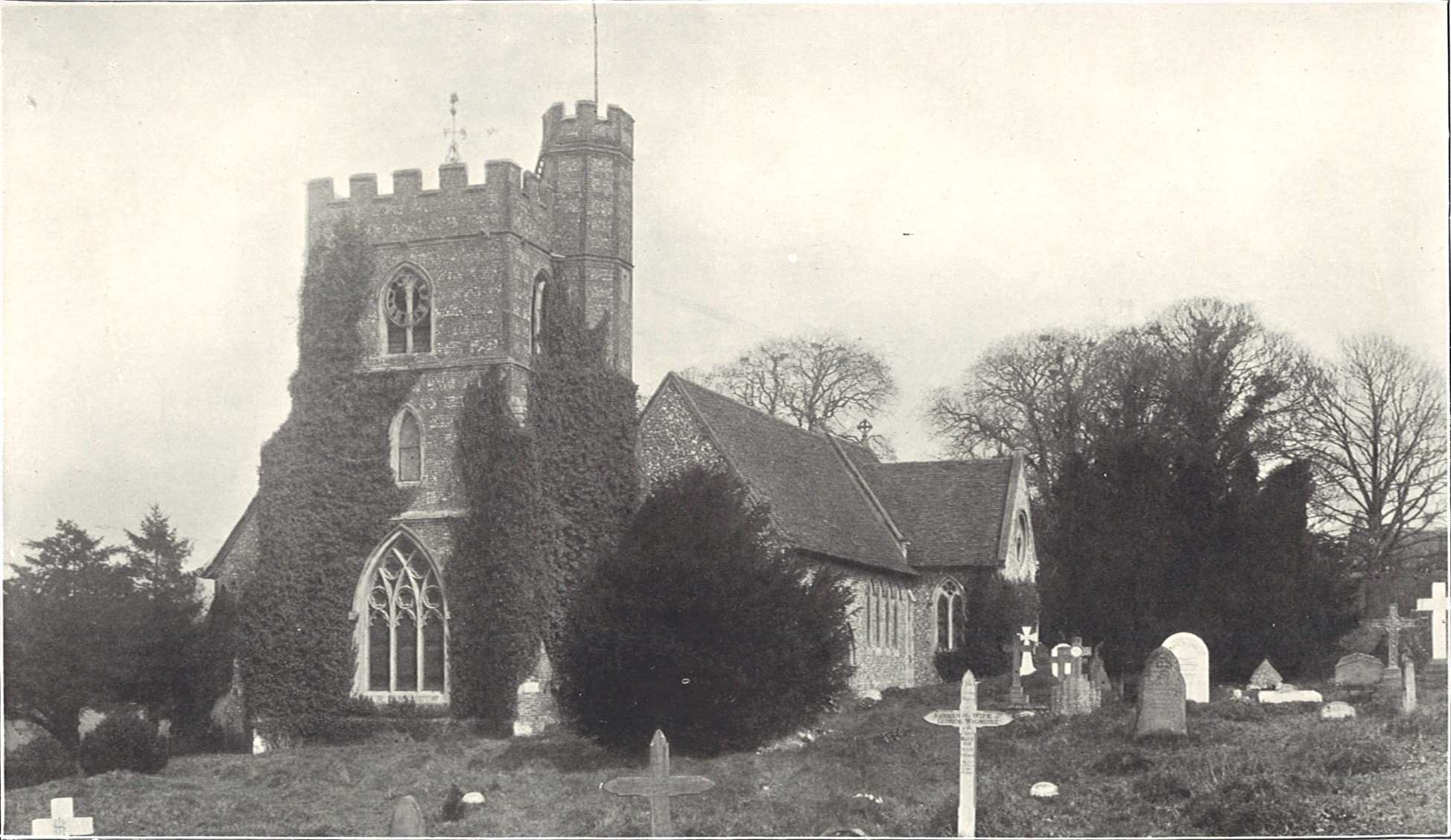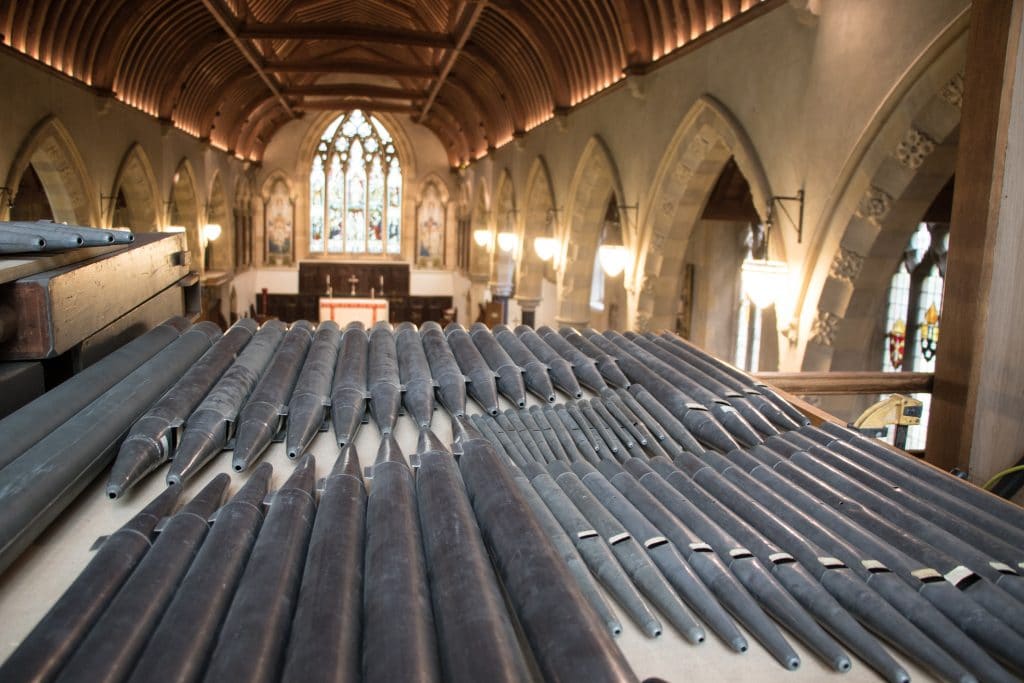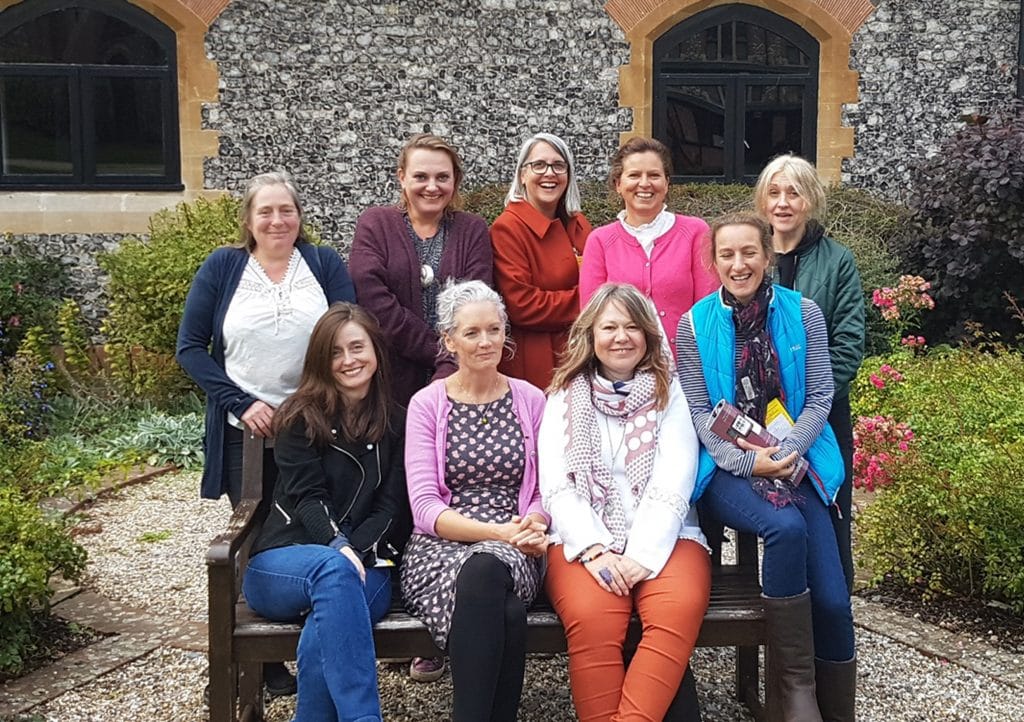The rebuilt church had a certain irregularity of plan and style, giving it a more organic and natural appearance than many other examples of rebuilt parish churches. Scott always regarded it as one of his best works. As he stated in his Recollections: “In 1848, my friend, the Rev. Thomas Stevens, commenced the restoration, or rather the partial rebuilding and enlargement of his church at Bradfield, which had been in contemplation some 10 years previously. There are executed so long since, I still view it is one of my best works. The period over which the work on Bradfield church extended was a time of great pleasure, owing to myconstant and most friendly communication, Mr Stevens.”
In The Ecclesiologist, a lengthy description was provided of the church and its fittings concluding that “the result has been a church, which, though in many respects, not the church we should have counselled, is yet one of the most solemn and impressive ones, and one of the most Catholic in its arrangements which has been produced in our communion [i.e. C of E] since the revival.”
The foundation of the College in 1850 is reputed to stem from the founder’s desire to enhance his church choir with young choristers. Indeed, a World War I memorial window was added to the north aisle in 1916 to Lt Blackall Simonds, son of one of the first pupils at Bradfield, of the 1st south Wales Borderers 24th Regiment, ‘Killed whilst leading the attack in a quarry at Vendresse in France, 26th Sept. 1914.’
Although in every other way a success for The Rev. Thomas Stevens, with an income of only a few thousand on his heavily mortgaged estate, the very large expenditure of rebuilding the church and founding of the school depleted his limited resources. In 1881 he was declared bankrupt and his estates were sold; by careful management the College survived.
One of the more notable recent events was the baptism in 1982 of Catherine Middleton, the future Duchess of Cambridge. The church continued in use as the parish church until the last service was held there in 2014.
It was announced in May 2019 that the College had agreed Heads of Terms with the Diocese of Oxford for the purchase of St Andrew’s Church, subject to securing the necessary consents. The College has held preliminary discussions with Historic England and the local Conservation Officer over this Grade II listed building to create a unique learning centre whilst retaining the architectural features that make it such a special place. The College will be submitting a planning application in due course.
Reuniting church and College offers an exciting and fitting future for a building of great architectural merit, which is intimately tied to the history of Bradfield. We hope that this beautiful building will become a vibrant and inspiring space once more.






